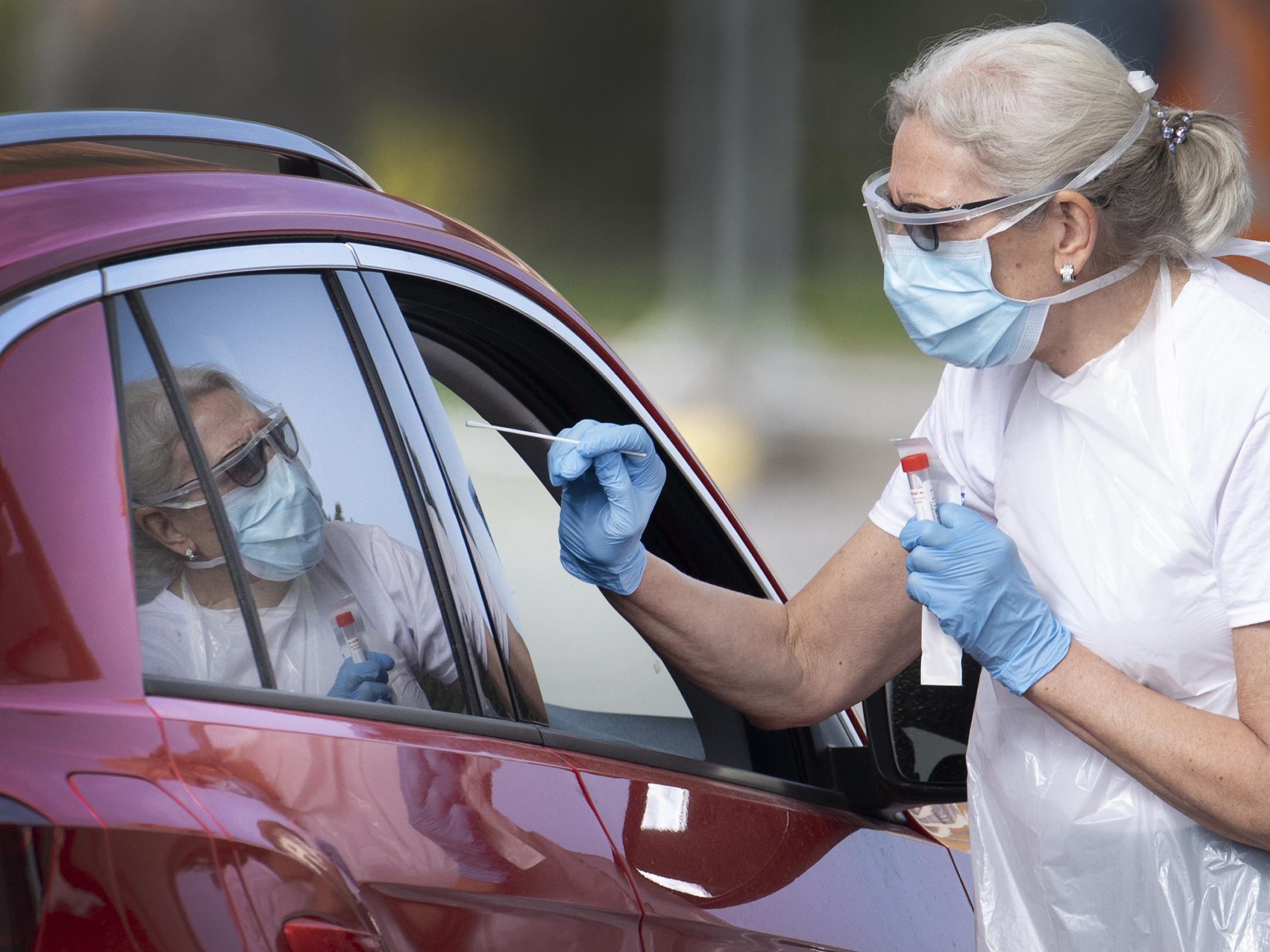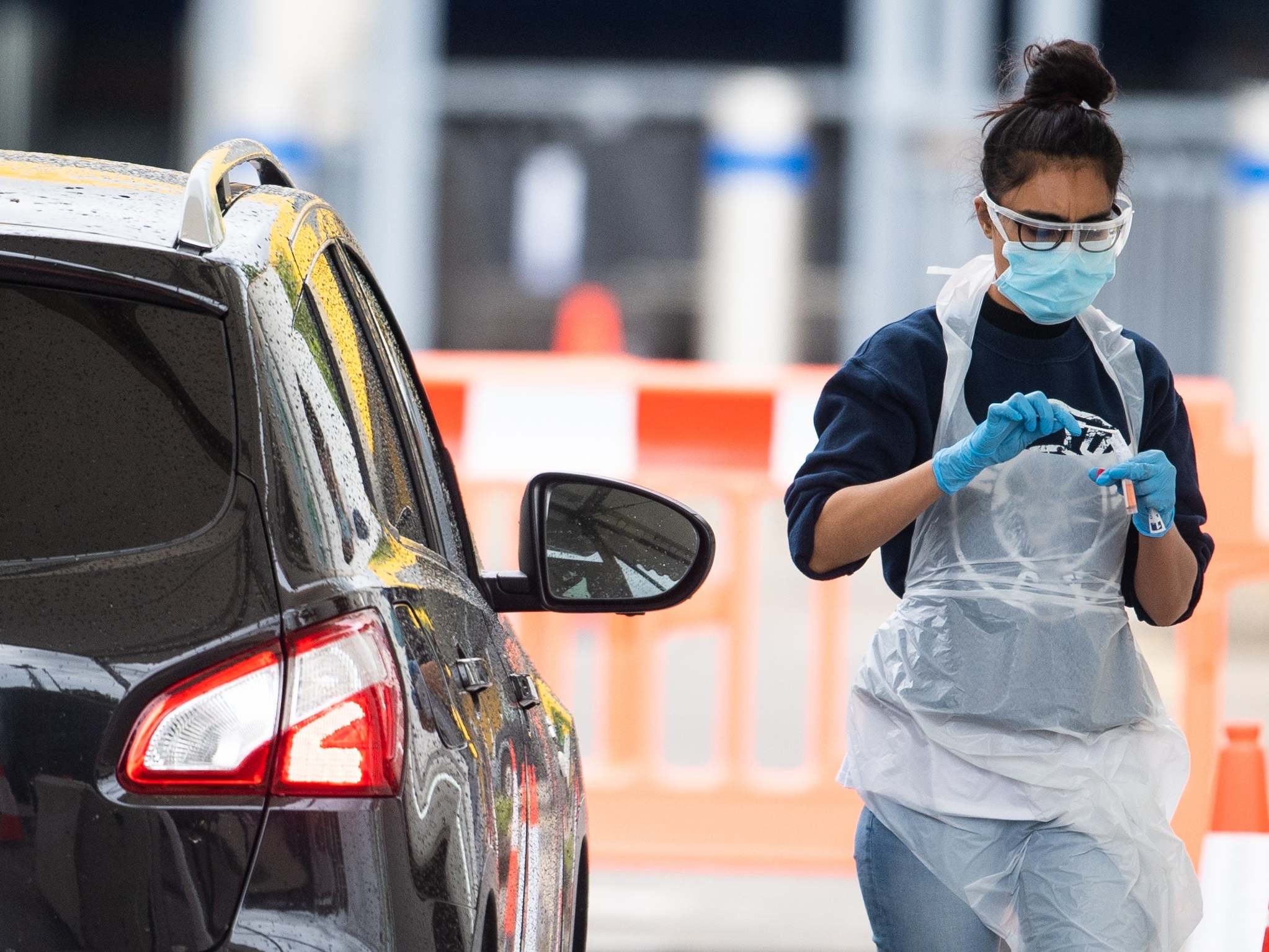How to get a Covid test
England is back under a ‘stay at home’ order until mid-February as coronavirus cases rise

Your support helps us to tell the story
From reproductive rights to climate change to Big Tech, The Independent is on the ground when the story is developing. Whether it's investigating the financials of Elon Musk's pro-Trump PAC or producing our latest documentary, 'The A Word', which shines a light on the American women fighting for reproductive rights, we know how important it is to parse out the facts from the messaging.
At such a critical moment in US history, we need reporters on the ground. Your donation allows us to keep sending journalists to speak to both sides of the story.
The Independent is trusted by Americans across the entire political spectrum. And unlike many other quality news outlets, we choose not to lock Americans out of our reporting and analysis with paywalls. We believe quality journalism should be available to everyone, paid for by those who can afford it.
Your support makes all the difference.England is still in lockdown to try and reduce rising coronavirus case numbers, and avoid the NHS being overwhelmed with patients.
The new variant spreads between 50 to 70 per cent faster than the first strain, and over 100,000 people have now died from Covid in the UK since the start of the pandemic.
According to official statistics, there were 92,000 positive coronavirus tests in the last 7 days, and 4.4m tests conducted in the last week (around 730,000 daily).
Since 16 March the World Health Organisation has been telling countries with Covid-19 to “test, test, test” for the virus. As well as implementing strict social distancing measures and lockdown policies, experts have said a system of testing and tracking is an essential component to recovery.
Testing has been part of the UK’s “five-pillar strategy” to fight the coronavirus since March but it has frequently faced criticism over continued hurdles and problems.
So who is eligible for a test now and what can you expect to happen if you get one?
Who can get a test?
Anyone in the UK with symptoms of coronavirus (a high temperature, a persistent and new cough, loss of taste and/or smell has changed) can be tested for the virus on the NHS.
You can also get a test if you’ve been asked by your local council to do so, you’re taking part in a government pilot project or you’ve been asked to get a test to confirm a positive result.
You can also get a test for someone you live with if they have symptoms.
You may need to get a test if you’re due to go into hospital for surgery or a procedure. The hospital will arrange this for you.
Those who cannot get a free test on the NHS include those who have come to the UK from a high-risk country, if you are planning to leave the country, or your employer or school has asked you to get a test but you have no symptoms. You may purchase a private test.
Local authorities are now rolling out asymptomatic tests, as of the week beginning 11 January, but mostly only for those who cannot work from home. Check with your local authority to see if this is a service they offer.

How do I book for a test?
On the government website there is an NHS test checking function, which shows you if you are eligible for a free test. Those with symptoms are always eligible.
Those in other circumstances should use the test checker. If you have symptoms, get a test as soon as possible. Testing sites around the UK are open seven days a week. If you are unable to travel to a test centre, you can order a home kit.
The coronavirus home test kit, will be registered and posted, and the results will be sent to you. This can be ordered through the NHS app on your phone. Just go to “check symptoms”.
Tests are most effective within five days of your symptoms developing. The ideal time is within three days of symptoms first showing. On the eighth day of having symptoms (England only), you must use a test centre as home kits will take too long to process.
On the fifth day of having symptoms (Scotland and Wales), you must use a test centre. Those who can not get a test online can call 119 to arrange a test, or 0300 303 2713 in Scotland.
What are my test options?
For people in England there are several choices for testing: you can either go to a drive-through centre or a walk-in centre, where you may administer the test or someone will administer the test for you. In order to go to a regional centre, the government says you or someone you live with must have a car to use.
With at-home test kit the tools will be delivered to your door and you can administer the test yourself in the privacy of your home. You will be asked to complete an identity check to get the test sent out.
You can order a test for up to three other people.
If you are getting a test because you have symptoms, you and all the people you live with muse self-isolate until you get the results of the test. Self-isolating also applies to the people in your support bubble.
What happens in the test?
The coronavirus test is not the same as the antibody test.
The coronavirus test is an antigen test and tests if you currently have Covid-19, whereas the antibody test is to establish whether you have previously had the virus.
The free coronavirus test involves taking a swab of the nose and back of the throat – this can be done by the person themselves or by someone else. The test is done using a long cotton bud.
An antibody test requires a sample of blood rather than a swab from the throat. These have not yet been made accessible to the public. Free antibody tests are currently only available for people who work in primary care.
If you are having the coronavirus swab test done at a drive-through service you need to all arrive in the same vehicle and sit next to a window in the vehicle.
You are not allowed to ride a motorbike to a drive-through test site.
If you have booked an at-home test, you can watch this official tutorial to show you how to administer the test to yourself.
How do I get my results?
You will receive your test results by text message. The government says most people will receive a response the next day, but it can take up to three days.
While you wait for your results you (and anyone you live with or bubble with) must continue to self-isolate.
If your test turns out to be negative you can safely return to work as long as you are well enough, have not had a high temperature for 48 hours and anyone you live with also tests negative for Covid-19.
If your test is positive and you have no symptoms you should self-isolate for 10 days from when you took the test. If your test is positive and you develop symptoms days after the result, you should self isolate for 10 days from when you started getting symptoms

Join our commenting forum
Join thought-provoking conversations, follow other Independent readers and see their replies
Comments